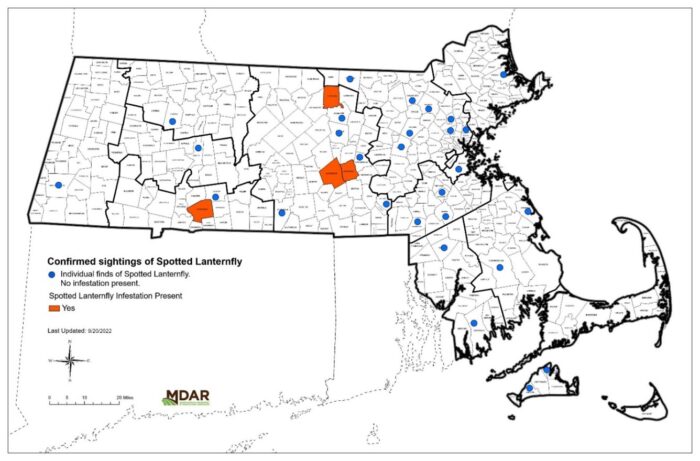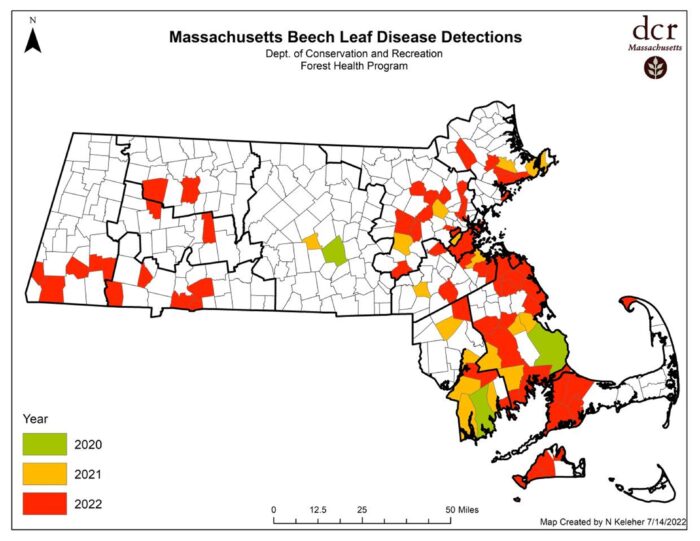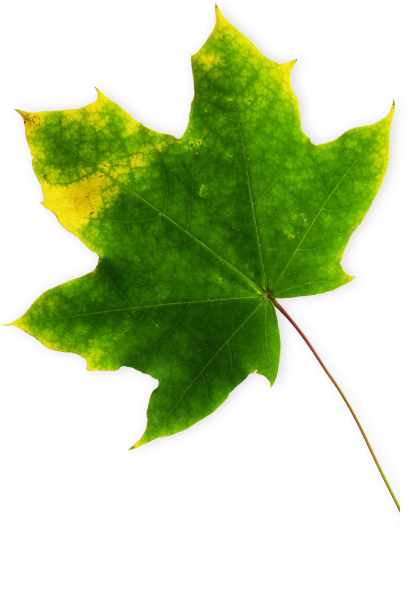Each year, our lawns and landscapes face unique challenges. This year-in-review blog captures the biggest obstacles we dealt with here in Massachusetts.
Drought
Drought was a significant feature in the landscape this year. From roughly May through September, we saw significantly less rain than we typically do in that time frame. Most of the growing season was spent under severe drought conditions. That level of drought led to wide array of symptoms from grass to shrubs and trees. The signs of drought stress only increased as the season progressed. It wasn’t until October when plants are naturally beginning to go dormant that we had significant gains to the rain deficit. The larger the plant is the longer it can take to see the effects of drought.
Turf, if not irrigated, will go dormant and turn yellow fairly readily. Shrubs and young trees may not show symptoms for months. We may see signs of damage to large mature trees years from now as a result of the drought. In the future, where possible with watering restrictions, deep watering even mature plantings will help reduce damage. Because it is so difficult to mitigate severe drought stress it is even more important to manage other stressors that can be managed like insects and diseases.
Insects
Defoliating caterpillars continue to be at low population levels where they are occurring in eastern Massachusetts. Spongy moth (formerly gypsy moth) caterpillars were heavy in the western part of the state in Berkshire County. Winter moth caterpillars if present are more of a problem for smaller ornamental and fruit trees than large mature trees simply due to the comparative size difference and percentage of damage. The majority of the insect/pest problems I saw this year, seem to be from sucking type insects like aphids, adelgids and scales etc. Particularly with aphids and scale insects, sooty mold is prevalent and usually the symptom most commonly seen by homeowners when there is an insect problem. There seemed to be an increase in the numbers of hemlock woolly adelgid this season, likely due to milder than usual winter temperatures.
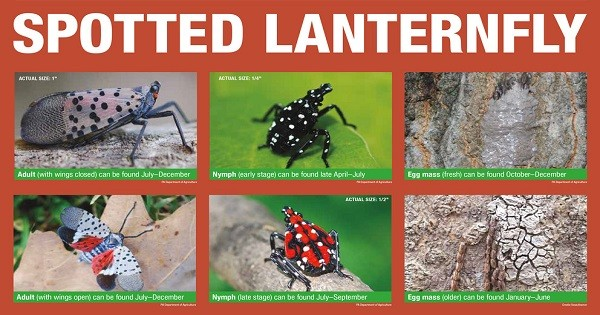 Spotted lanternfly, a new Invasive species in Massachusetts, is beginning to spread. Established populations have now been found in Fitchburg, Worcester, Shrewsbury, and Springfield. There have been several other sightings of individuals throughout the state, but no established populations were found associated with them.
Spotted lanternfly, a new Invasive species in Massachusetts, is beginning to spread. Established populations have now been found in Fitchburg, Worcester, Shrewsbury, and Springfield. There have been several other sightings of individuals throughout the state, but no established populations were found associated with them.
Spotted lanternfly is particularly problematic for grapes and fruit trees because of the damage to fruit and productivity. In the landscape, however, they are more of a nuisance for a wide variety of shrubs and trees. The primary concern is the high numbers and density of insects and the mess they make by their feeding. As sucking insects, they will produce lots of honey dew (liquid insect poop) and black sooty mold that will then grow on the sugary excrement. Everyone should be on the lookout for this pest since continued spread is very likely. If any life stages of this insect are found in Massachusetts, it should be reported here: https://massnrc.org/pests/slfreport.aspx.
Diseases
Due to the exceptionally dry conditions this year many foliar diseases were naturally suppressed. Even with reduced rainfall however some diseases still caused infection with high humidity. I often saw disease where frequent irrigation, trying to mitigate the drought, was getting foliage wet regularly. These are some of the diseases the Plant Diagnostic Laboratory at the University of Massachusetts Amherst saw over the season.
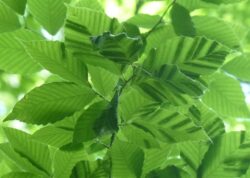 Beech leaf disease (BLD) is an important new disease of European and American beech trees. It is still unknown how the exactly the disease is spreading, but it is spreading fast. The map below shows how much the disease has spread in the last 3 years. Unlike most other plant diseases that are caused by fungi, BLD is caused by a leaf infecting nematode (a microscopic round worm).
Beech leaf disease (BLD) is an important new disease of European and American beech trees. It is still unknown how the exactly the disease is spreading, but it is spreading fast. The map below shows how much the disease has spread in the last 3 years. Unlike most other plant diseases that are caused by fungi, BLD is caused by a leaf infecting nematode (a microscopic round worm).
Early signs of infection can be identified by dark banding between the leaf veins when looking up at backlit leaves. Treatment options are limited at this time, but there are treatments that may help. Infection for only a few years may be enough to kill some trees. This disease only adds to the more common Phytophthora bleeding cankers, and beech bark disease causing decline in beech trees. It is worthwhile to begin treatment even with seemingly healthy trees to help reduce infection.
Various types of stem cankering fungi have been observed on lots of plant species. Stem cankers are often opportunistic and do not cause much harm under normal circumstances with healthy and robust trees. Trees require moist, well-drained soils in order to thrive. Conditions often found in residential landscapes such as restricted root zones, soil compaction, sandy soils and competition from surrounding trees and turfgrasses make drought stress a major contributor to decline.
When plants are weakened by drought, and other landscape stresses they become much more susceptible to infection. Symptoms of stem cankering include yellowing/browning leaves/needles, premature shedding, canopy thinning and branch dieback. Scale insects can also be a contributor creating the openings that the disease can enter the plant.
If you have seen any symptoms on your trees and shrubs that you think are not normal, let us know. We would be happy to help identify the problem and recommend solutions to help manage your plants. For additional blog articles, click here!
